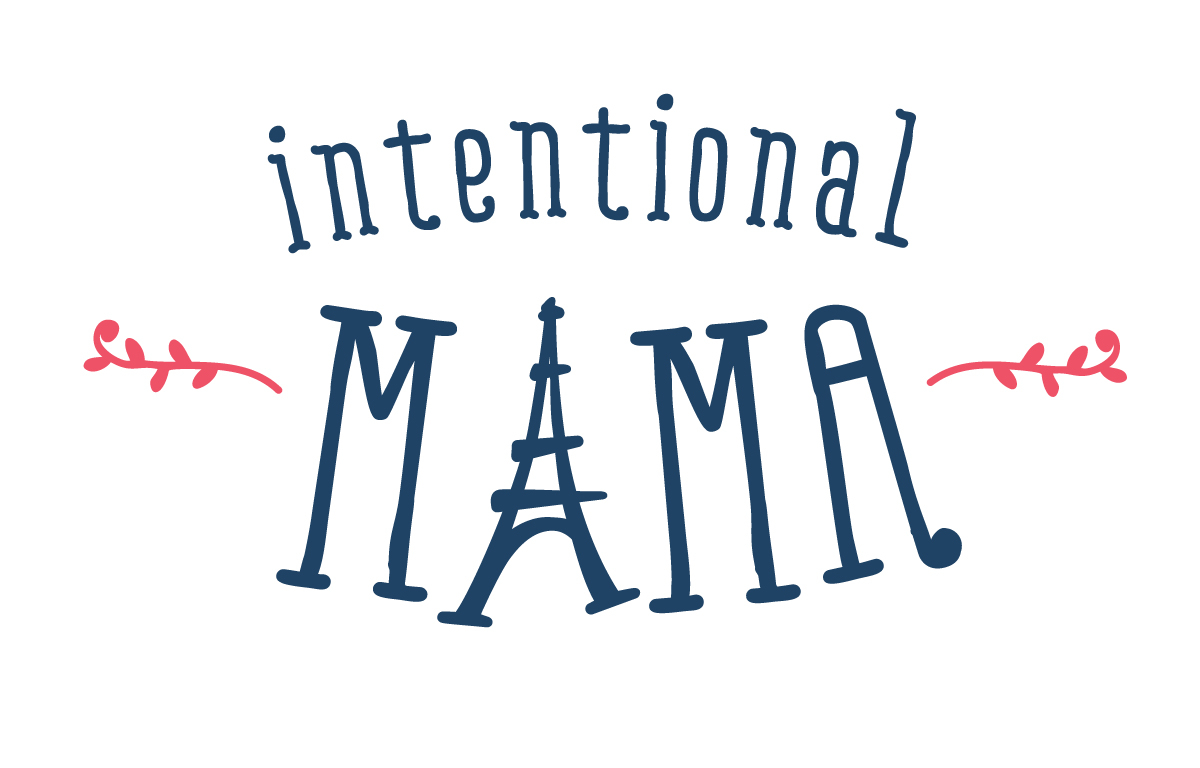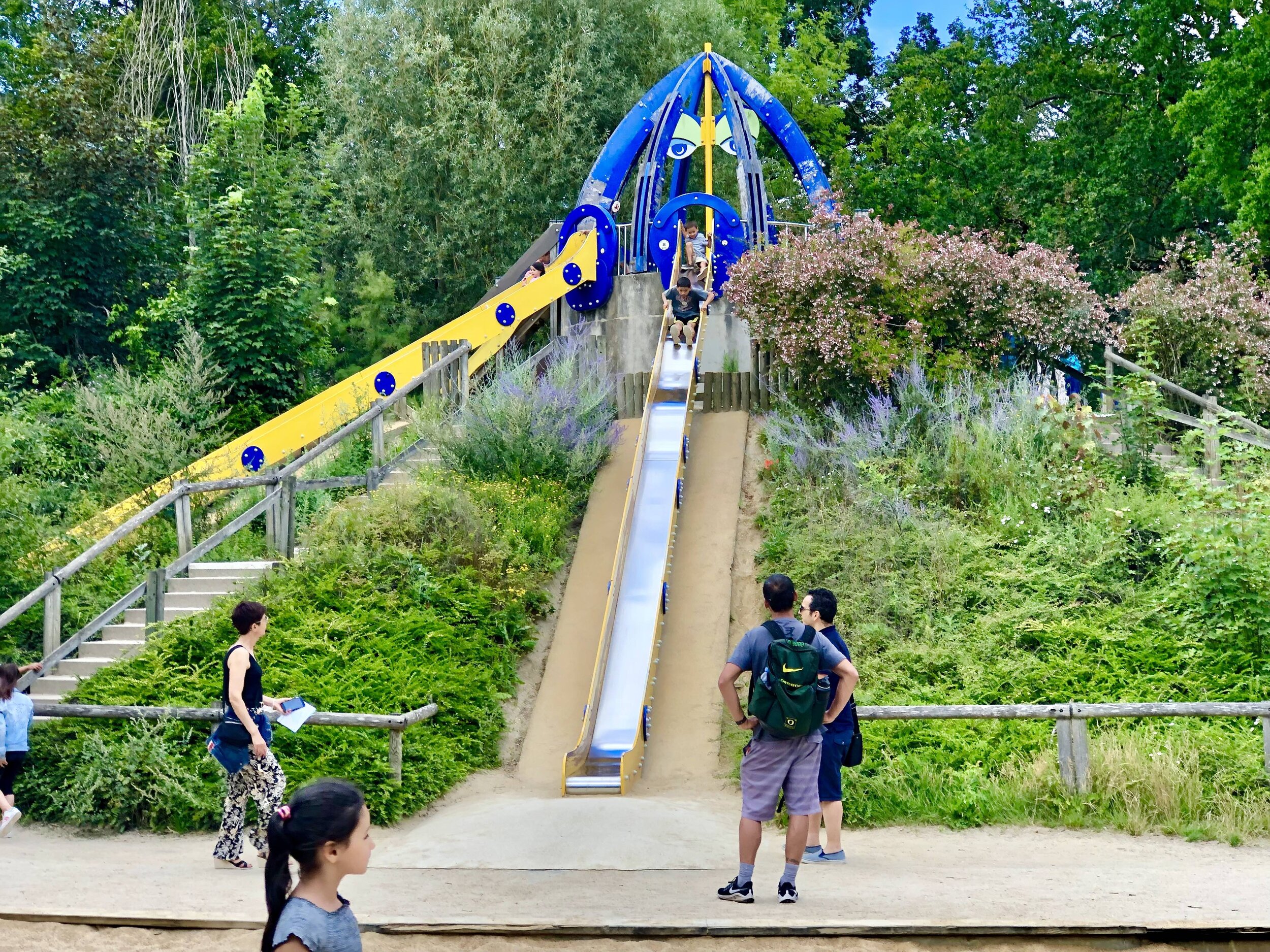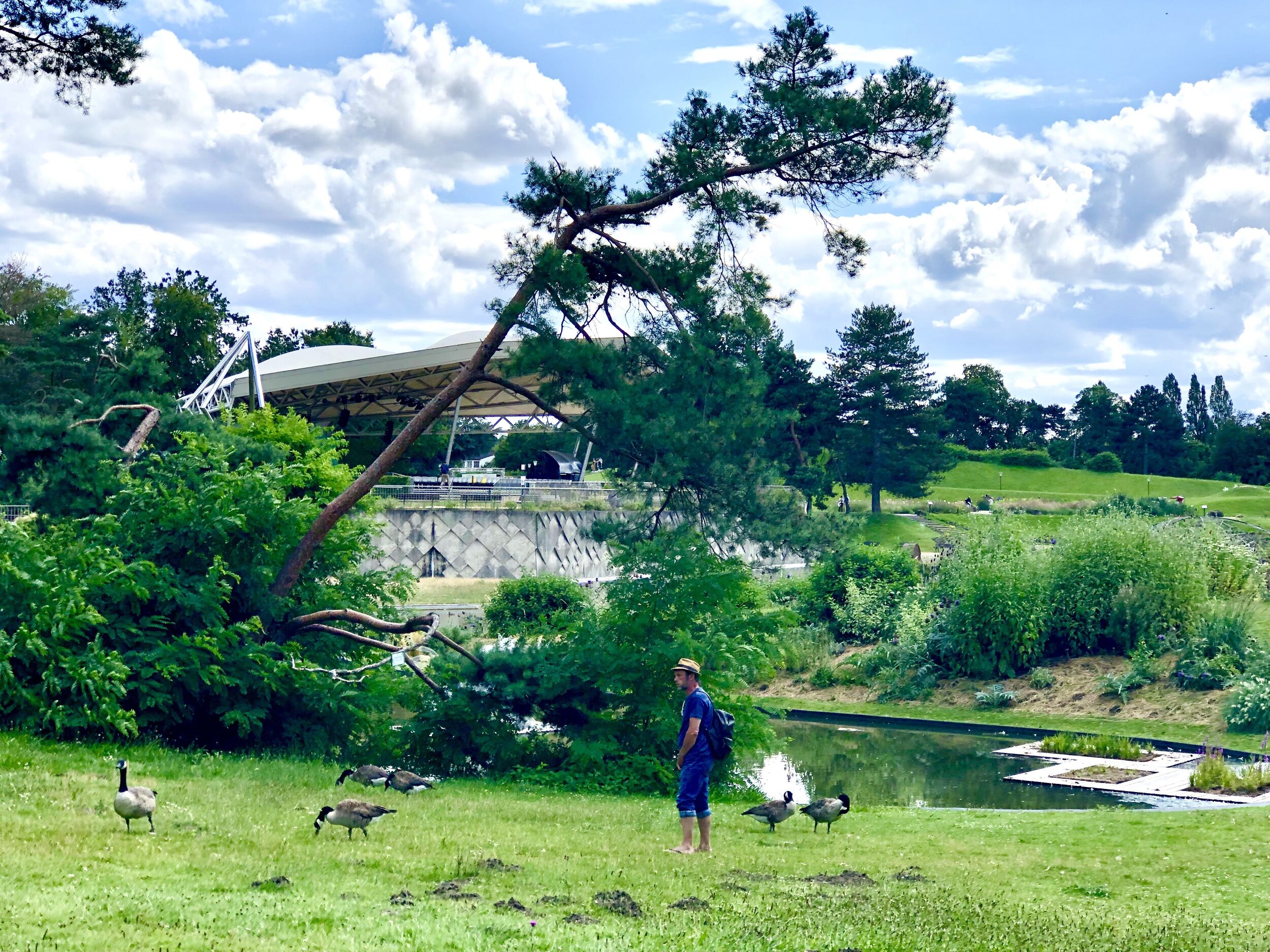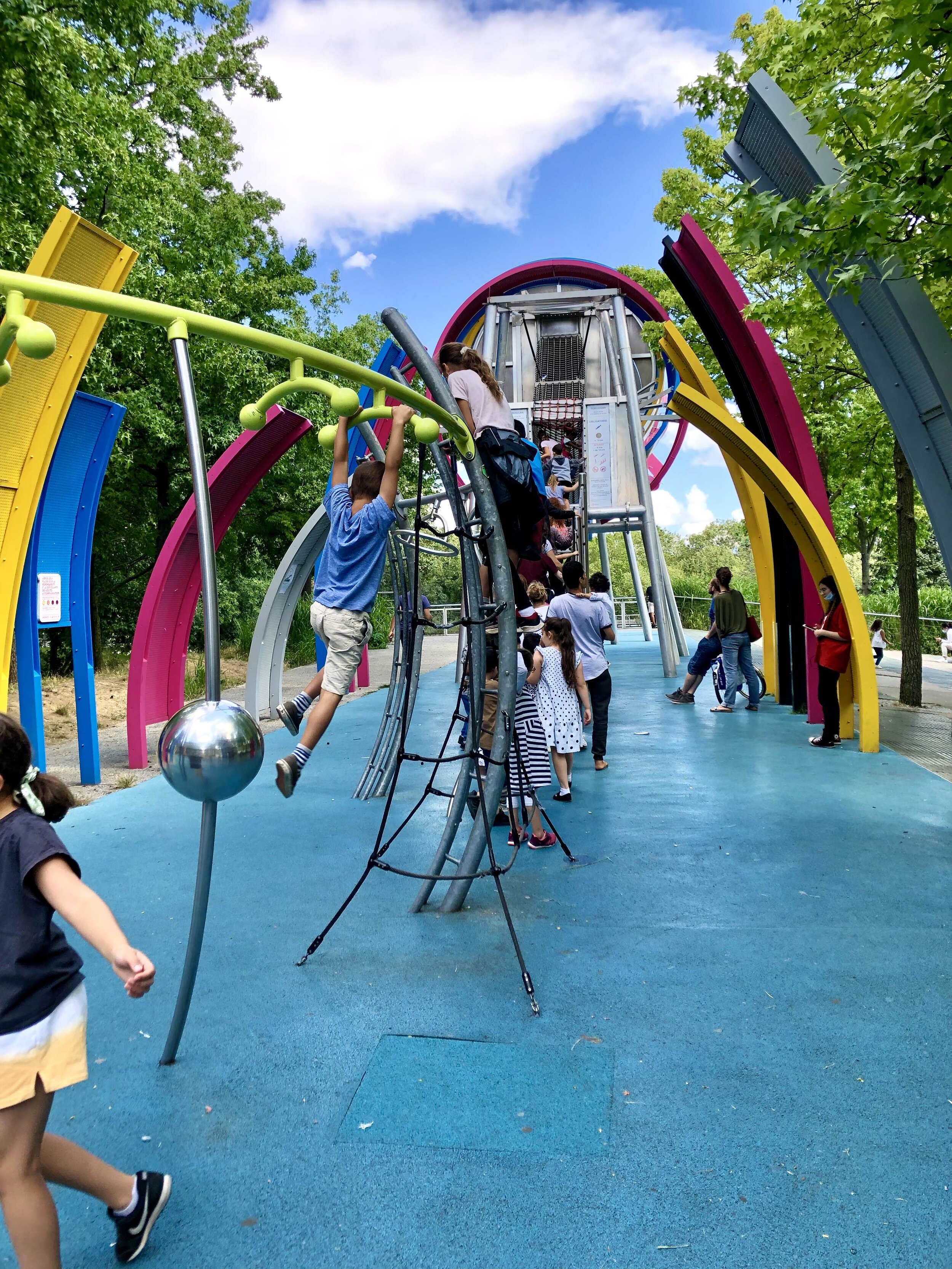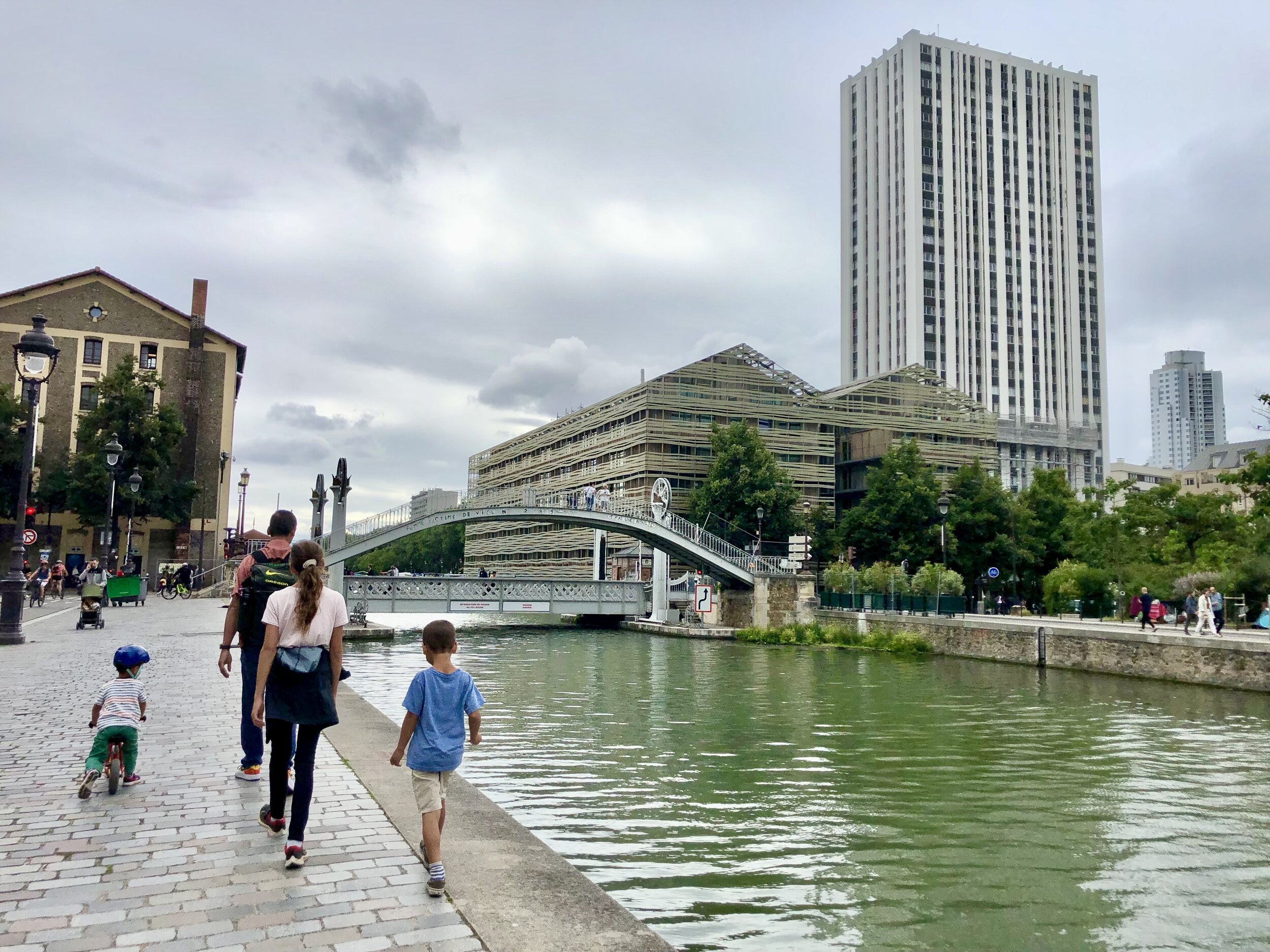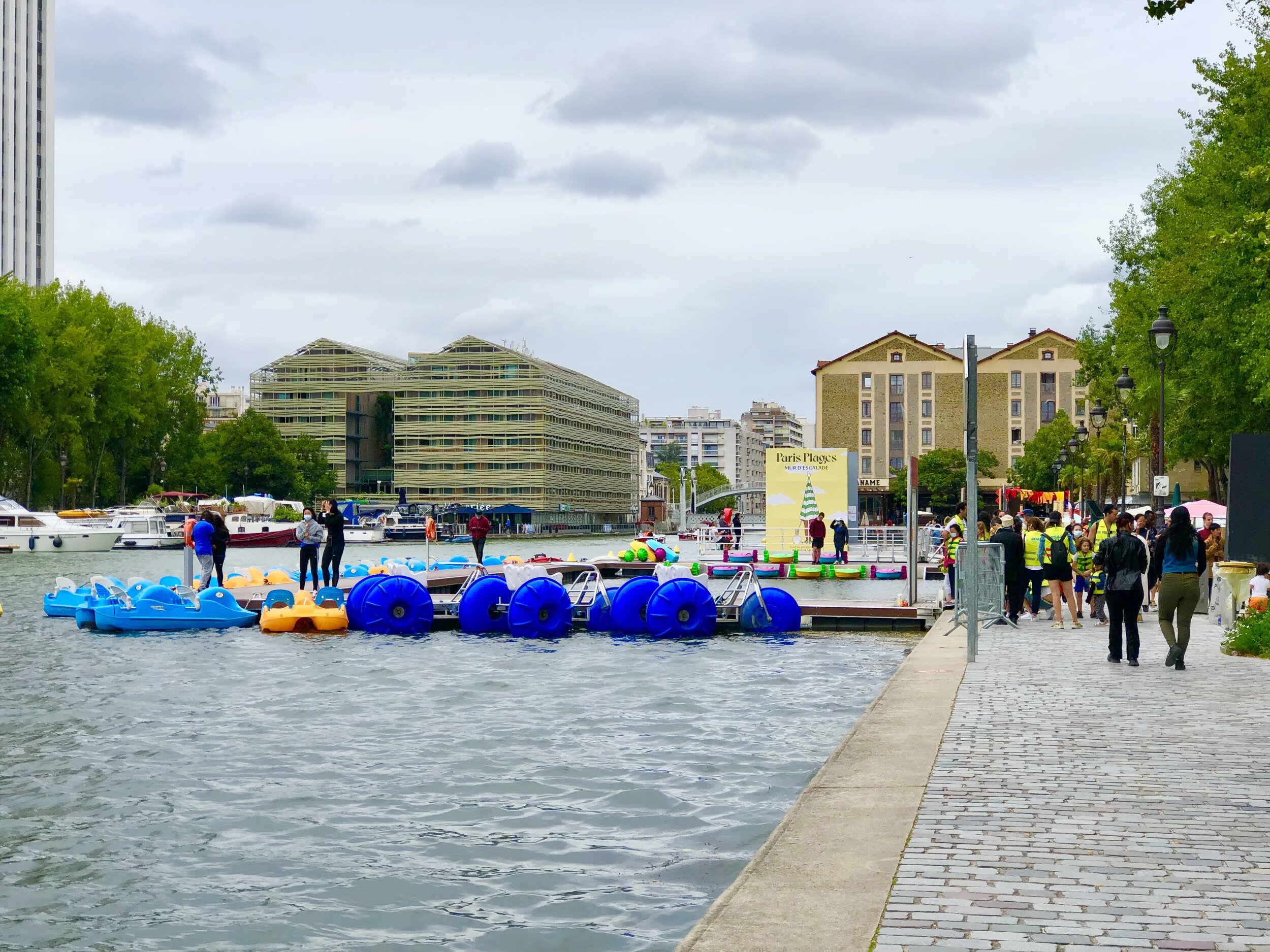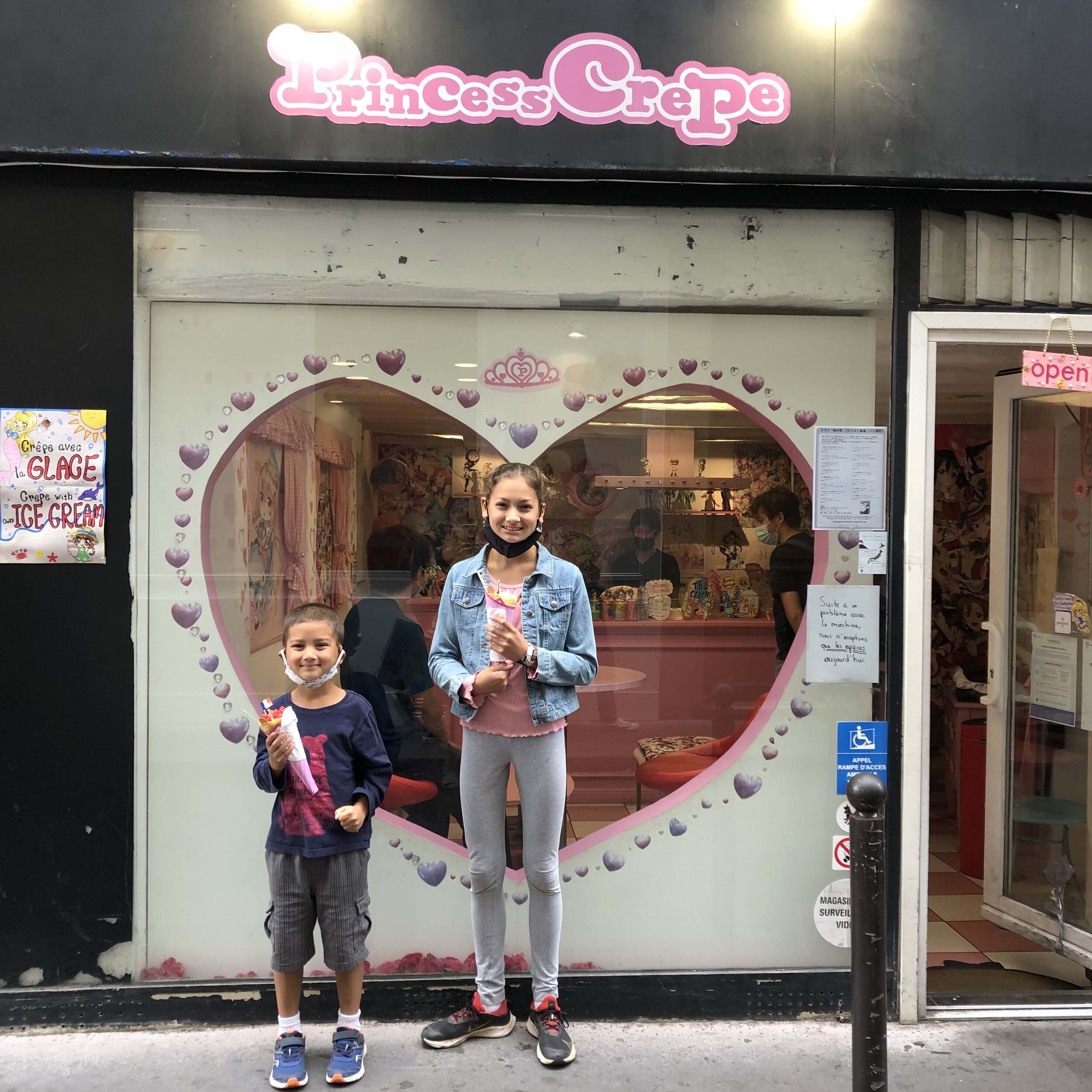Visiting Paris During the Pass Sanitaire: What Our Family Loved
“I love Paris in the springtime.
I love Paris in the fall.
I love Paris in the winter, when it drizzles.
I love Paris in the summer, when it sizzles.
I love Paris every moment—every moment of the year…”
Ella Fitzgerald, I Love Paris
Regardless of Paris’ unending allure, I still wondered: would my family and I love Paris in the summer of 2021, with France’s newly implemented pass sanitaire, and in the midst of moderately strict Covid regulations? After a week in Paris this past August, I can say that we loved our stay in Paris nonetheless. Our week-long homestay in a surprisingly quiet maison particulière allowed for us to visit some of our favorite parks and to enjoy the panoramic view from the Eiffel Tower once again, despite the Covid context surrounding our visit. There were far fewer tourists in Paris than in the most recent pre-pandemic summers, but the architectural beauty and cultural options were still a delight.
More specifically, our homestay was in the 20th arrondissement, between historic Père Lachaise Cemetery and the sweet hilltop neighborhood of La Campagne à Paris. Normally I prefer to stay in the artsy Marais, eclectic Bastille, established Saint Germain or Les Invalides neighborhoods, but this homestay (yes, via HomeExchange again!) was a great fit for our family. The front entrance, boasting a garden hideaway that is a rare gem in Paris, was our favorite perk! This summer was unusually rainy and cool in most parts of France, but after a few cool, gray days in Paris we agreed that the low temperatures were much easier to tolerate than the usual sweltering August heat.
Masks were required for all indoor spaces, but had recently been lifted for outdoor spaces in Paris. Many people were still wearing masks outdoors, however, particularly at the outdoor markets where social distancing was unlikely.
Like many Parisian families on the eastern side of Paris, we spent Sunday (our first full day) at the Parc Floral. Admission is inexpensive, the gardens are diverse and lovely, and the playgrounds are fantastic. Although there wasn’t the usual live music concert on the particular Sunday of our visit, it appeared that they had continued this summer. Happily, the guignol puppet shows were running and the rosalies (4- and 6-person pedal bike carts) were still available to rent.
The next day my husband and a French friend got their first French Covid antigen tests so we could visit the Grande Gallerie de l’Evolution at the Jardin des Plantes. The majority of French pharmacies offer the quick antigen test, and they can provide both printed and digital results in about 15 minutes. (PCR tests, in contrast, typically need to be done at a medical lab or airport.) The cost for antigen and PCR tests are capped by the French government (typically 25 Euros per antigen test and 49 per PCR), keeping them among the lowest in Europe (and in direct contrast to England, where they can run over 200 Euros per test). French citizens are able to get either Covid test free up until October 15th (next week at the time of this writing), after which unvaccinated citizens will need to pay for such a test unless prescribed by a doctor.
In any case, the nasal tests are always a bit of a misery, but the negative test results count as a pass sanitaire for 48 hours. (Currently a PCR test will count for 72 hours.) I expect to write another blog post focusing on our experience living in France for the past two months in regards to the pass sanitaire/vaccine passport, but for this Paris post I will simply say that it was a bothersome hurdle as it is intended to be, and as a result we focused our time on parks and walks rather than visiting more of the cultural sites like museums and monuments.
Besides the Parc Floral, we also chose to spend time at Parc de la Villette in northeast Paris. This is a huge park with 55 acres of greenspace and another 20 acres of indoor concert spaces, expo halls, and an awesome science museum boasting an IMAX theatre nearby. Our sole destination at the park, however, was the dragon slide, a huge (25-meter long) metallic structure that impresses even teenagers with its sleek tunneled drop. The 1980-era slide was given some safety improvements in 2015, but due to the height and the swinging rope entry, it’s only recommended for ages 8-14. That said, our six year old found it perfectly manageable and superbly fun.
The Parc de la Villette is spliced down the middle by the Canal Saint Martin, so we walked back to central Paris alongside this canal and delighted in all the Paris Plage activities on the embankments (pedal boats, swimming areas, trampolines, lounge chairs, pétanque games, music, and imported Normandy sand intended to enhance the summer fun).
Other highlights of our Paris visit included another chance to eat the world-reknown fallafel sandwiches at L’As du Falafel on Rue des Rosiers, a fantastic to-go meal in the Jewish district of the Marais. My husband says their falafel is consistently the best vegetarian meal he’s had (and he’s not vegetarian). My favorite crêperie just down the same street has now moved to the 10th arrondissement, but there’s always the kitschy Japanese Princess Crêpe shop on the nearby cross street, rue des Ecouffes. It’s a small shop boasting an abundance of pink decor, Vichy costume-clad employees, and liberal amounts of whipped cream on all their dessert crepes.
A final highlight for our children was the adventure playground known as Jardin Nelson Mandela, formerly Jardin des Halles. Next to the renovated semi-underground shopping center Les Halles are two large playgrounds, one for ages 3-10, and the other, a gated adventure playground for ages 6-11 that opens for children in one-hour periods where they are surveyed by two young female employees until pickup time. Parents are expected to remain nearby and return promptly for pickup at the appropriate gate on the other side. I took advantage of the kids’ playtime and with my husband’s blessing, I enjoyed the chance to shop for kitchen supplies at E. Dehillerin, an utensil and cuisine shop dating from 1820 that is still consistently mentioned in any hip Paris cookbook. After I made the enjoyable five-minute walk past Eglise Saint Eustache from the Mandela playgrounds, I found once again that it offers a cook’s delight of narrow hallways lined with rows of copper pots, silicone molds, tartlet tins, and handheld tools ranging from oyster knives to crème brulée torches. I purchased a madeleine mold, a wooden crepe spreader, and a silicone mat. One caveat: items are not generally price-labeled; instead the prices are noted in an employee catalogue at the register used to calculate your purchases. Still, the prices are reasonable if not slightly less than other French kitchen shops I’ve frequented. It was a delight to end our Paris stay with the promise of still more French-inspired baking to resume in the near future!
In which season would you choose to visit Paris? Where would you go in Paris if you were limited to the shops and outdoor venues?
As a side note, merci for your patience with my lack of posts from this trip thus far. I severely underestimated how tired I would be at the end of each day during this three-month stay. Much of my fatigue is tied to having a ten-month-old baby, three other boys, a middle school student, meals to shop for and cook, laundry to hang dry, and homework to oversee, but the rest is simply a bit of fatigue from cultural adaptation, probably. Ha! Nonetheless I’m getting lots of amazing support from French friends here, and for that I’m extremely grateful. I hope to be writing more soon. Bises et à bientôt.
